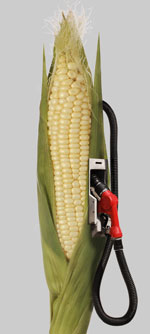Autor: rsbombard
You have heard of your ancestors using wood to burn, cook or to light camp fires to keep themselves warm during cold days. You would have done it at one point of the other. Maybe you did not know, but you have been using one of the grandest and oldest forms of biomass for your purposes. Wood apart, there are a lot more forms of biomass, all capable into tapping into to unleash energy capable of being utilized for our residential or commercial uses.

"Biomass", "bio energy" all refers to the energy derived from organic matter, mostly plants, other vegetation and plant derived materials. Food crops, organic residue, grasses, woody plants, wood, agricultural waste, plant residue and even the organic component of the residential or industrial wastes, all classify as biomass.
Biofuels include biodiesel, biobutanol, biogas & bioethanol and are all renewable sources of energy. However, they do contribute to the global warming. A good thing about biomass is that the same equipment which is now burning the fossil fuels can be used for generating electricity out of biomass.
It has evolved as a very important source of energy and ranks in importance next only to coal, fossil fuels and natural gas.Although Biomass is still used more for its traditional purposes, it is indeed gaining prominence for its modern usage as in generating heat and providing for power in industries and residences.
It might be interesting to note the per capita usage of Biomass is more in Sweden than in India or China. Just to give you an inkling, California on an average produces about 60 million tones of dry biomass each year, out of which about 5 million tones are being used to generate electricity to the tune of about 2000 megawatts just enough to light about a million homes.
The usage of biomass can reduce global warming which is actually contributed by burning of fossil fuels. While growing plants use and store carbon monoxide and release it back when dead or when decaying. By replanting, the newly planting saplings can make use of the carbon monoxide emitted by the decaying plants. In this way, the carbon monoxide cycle is contained. However, if the replanting is not done adequately enough, the usage of biomass can indeed contribute to the global warming.
Biomass has emerged as quite a formidable contender to replace of fossil fuels in applicability and the fact that it is a clean, cheap and renewable fuel can only insist on its likely popularity as a fuel and as a reliable and abundant source of power and energy
Jason Uvios writes about "Biomass: The Old Daddy of Renewable Energy Sources" to visit: http://www.generator-always.info, http://www.generator-always.info and http://www.crispgenerator.info
No comments:
Post a Comment